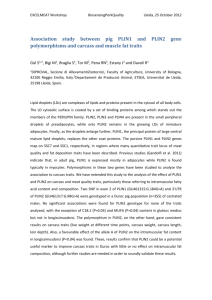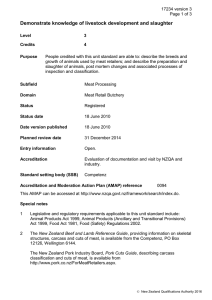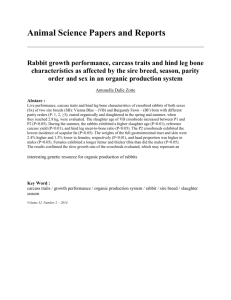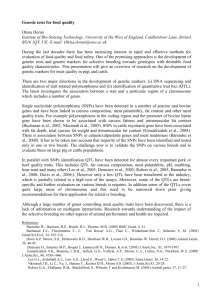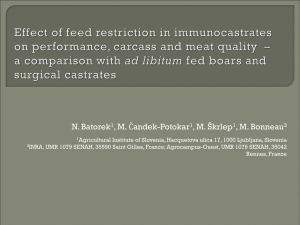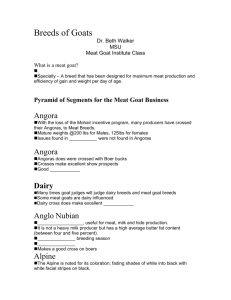Association of genes involved in carcass and meat quality traits in
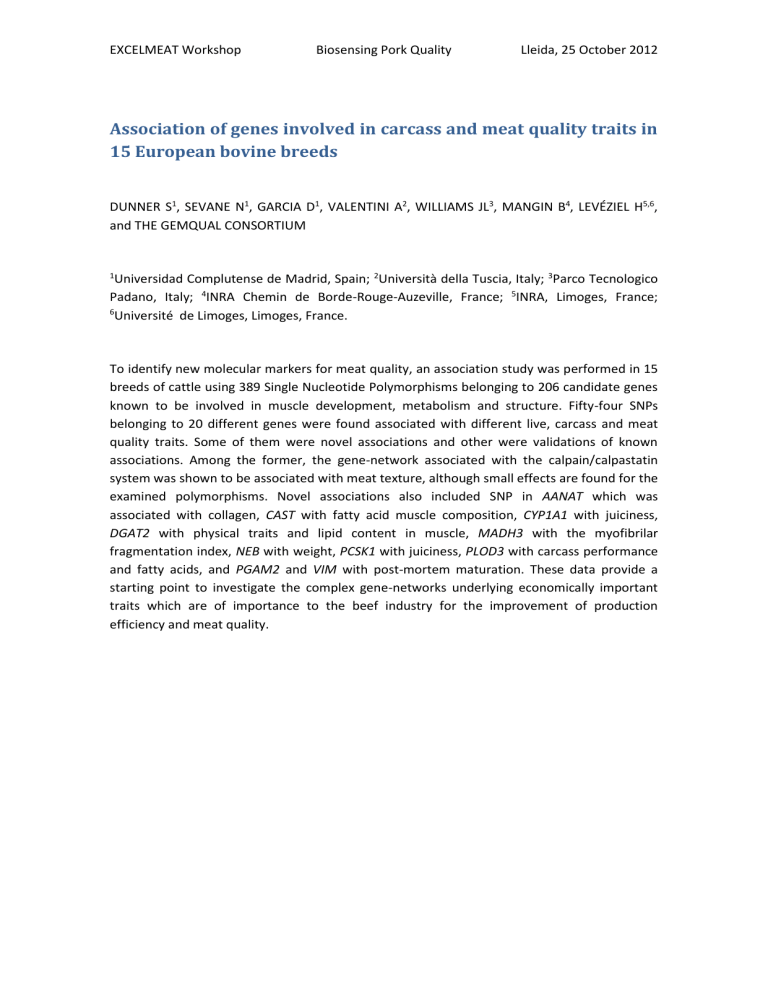
EXCELMEAT Workshop Biosensing Pork Quality Lleida, 25 October 2012
Association of genes involved in carcass and meat quality traits in
15 European bovine breeds
DUNNER S 1 , SEVANE N 1 , GARCIA D 1 , VALENTINI A 2 , WILLIAMS JL 3 , MANGIN B 4 , LEVÉZIEL H 5,6 , and THE GEMQUAL CONSORTIUM
1 Universidad Complutense de Madrid, Spain; 2 Università della Tuscia, Italy; 3 Parco Tecnologico
Padano, Italy; 4 INRA Chemin de Borde-Rouge-Auzeville, France;
6 Université de Limoges, Limoges, France.
5 INRA, Limoges, France;
To identify new molecular markers for meat quality, an association study was performed in 15 breeds of cattle using 389 Single Nucleotide Polymorphisms belonging to 206 candidate genes known to be involved in muscle development, metabolism and structure. Fifty-four SNPs belonging to 20 different genes were found associated with different live, carcass and meat quality traits. Some of them were novel associations and other were validations of known associations. Among the former, the gene-network associated with the calpain/calpastatin system was shown to be associated with meat texture, although small effects are found for the examined polymorphisms. Novel associations also included SNP in AANAT which was associated with collagen, CAST with fatty acid muscle composition, CYP1A1 with juiciness,
DGAT2 with physical traits and lipid content in muscle, MADH3 with the myofibrilar fragmentation index, NEB with weight, PCSK1 with juiciness, PLOD3 with carcass performance and fatty acids, and PGAM2 and VIM with post-mortem maturation. These data provide a starting point to investigate the complex gene-networks underlying economically important traits which are of importance to the beef industry for the improvement of production efficiency and meat quality.


